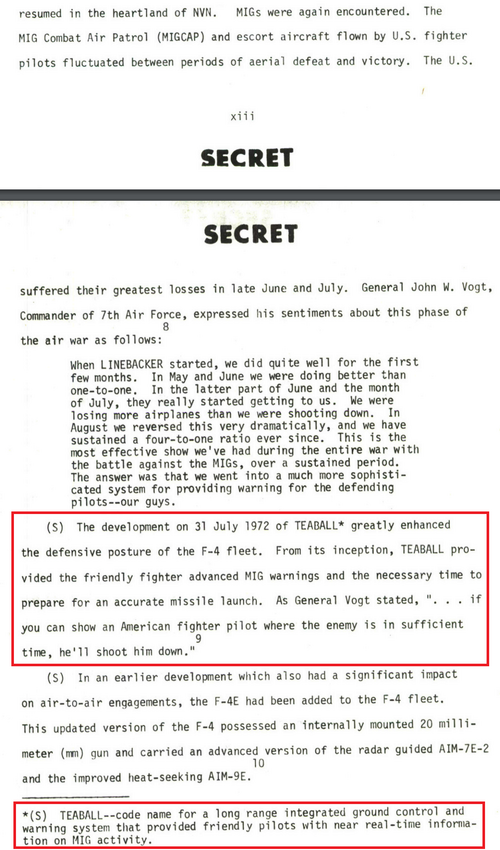You are using an out of date browser. It may not display this or other websites correctly.
You should upgrade or use an alternative browser.
You should upgrade or use an alternative browser.
Ideal USAF air superiority fighter for the Vietnam War.
- Thread starter njiiaf
- Start date
Cost dictates the action. Sustainable programs over gheewhiz factors.
Convert F-5 into a low cost multirole fighter, but available in twin J85 or single J-52 options.
Upgraded F-8 with J79, adapt the M61 rotary, move towards a pointy nose, add a bubble canopy, and include AIM-7 compatibility for the middle tier multirole fighter.
A-6 (J52) is the obvious heavy, subsonic strike aircraft.
F-111 is the obvious long range, supersonic strike aircraft.
F-4 is the obviousy heavy, high performance multirole fighter.
All multirole fighters would require AIM-9 compatibility (and AIM-7 compatibility for mids to heavies) and focus on interchangeable pylons/droptanks that allow all the fighters to share ordnance from common pools of stock.
Enlarged F-106B (with WSO replacing co-pilot) AIM-9 and AIM-7 compatibility for high altitude targets around CONUS. AIM-7 requires similar missile inputs as required by AIM-4 and AIM-26.
Convert F-5 into a low cost multirole fighter, but available in twin J85 or single J-52 options.
Upgraded F-8 with J79, adapt the M61 rotary, move towards a pointy nose, add a bubble canopy, and include AIM-7 compatibility for the middle tier multirole fighter.
A-6 (J52) is the obvious heavy, subsonic strike aircraft.
F-111 is the obvious long range, supersonic strike aircraft.
F-4 is the obviousy heavy, high performance multirole fighter.
All multirole fighters would require AIM-9 compatibility (and AIM-7 compatibility for mids to heavies) and focus on interchangeable pylons/droptanks that allow all the fighters to share ordnance from common pools of stock.
Enlarged F-106B (with WSO replacing co-pilot) AIM-9 and AIM-7 compatibility for high altitude targets around CONUS. AIM-7 requires similar missile inputs as required by AIM-4 and AIM-26.
The whole point of this thread is "What would be the best option?", not "What is the most likely to happen?". The Skylancer is the best option. The Navy didn't want it because it was too similar to the F8U and Vought needed the contract more than Douglas. It wouldn't be the first time the USAF bought a Navy plane... see B-66 also by Douglas and also in this exact time period. And the Navy rejecting it would have likely made the USAF like it even more. Note we are supplementing/replacing the F-4 which is also another Navy turned USAF plane and how most of the proposals in this thread are for F8Us or F11Fs, both Navy planes.
Skylancer weapon was the Sparrow II, which OTL Canadair adopted for the Avro Arrow.
In my TL I imagined that Canadair took over the entire Skylancer program on top of its Sparrow II as a) a baby Arrow - they were strikingly similar - and b) a CF-100 & Sabre successor in place of OTL CF-104s : for the RCAF 1st air division in Europe.
Orenda still get a J79 licence for it. Then I got Gerald Bull at CARDE transfering the Arrow analog FBW to the Skylancer, the end result being a Mirage 2000 lookalike except 20 years in advance.
The F5D (rebranded Skylancier to please Quebec : lancer = lancier) replaces all the CF-104s, F-101s, and CF-5s for a total of 500 airframes and a production run well into the 1960's.
Its analog FBW drastically drop the landing speed (Mirage III touched down as 200 kt, Mirage 2000 cut that to 140 kt) and, with the more powerful J79 can fly out of Bonaventure carrier replacing the Banshees.
In turn, that naval variant will attract the US Navy...
Last edited:
BlackBat242
OK, I changed my personal text ;)
- Joined
- 10 April 2013
- Messages
- 786
- Reaction score
- 1,926
The F5D Skylancer WAS designed for the J79!Significantly lower wing loading, superior climb performance, and longer range (possibly SARH capability). Drop in a J79 and you get very similar T/W ratio.
As was the Super Tiger!
How did the F5D Skylancer and F11F-1F Super Tiger compare?
From what I gather the Skylancer was bigger and heavier, 19,000lbs operating empty (with pilot, guns & ammo) vs 14,500lbs for an F11F Tiger. The Super Tiger’s might then have been around 15,000lbs.
The Skylancer had the benefit of 35% more internal fuel, and maybe could have been lightened a little bit with a simpler weapons system, but for the tactical dayfighter / light attack role I’m not sure what makes it superior to the Super Tiger?
The expected weight of the Sparrow-capable Super Tiger was some 2,000lb heavier than the test aircraft was... the two-seat ST was about the same due to the weight of pilot, instruments, and seat not being much heavier than the 536 lb of fuel they displaced.
Do you need Sparrow though, given it’s low success rate against fighters? Especially if you field a better missile than the fairly crappy Aim-9B (Aim-9C/D or better?).The expected weight of the Sparrow-capable Super Tiger was some 2,000lb heavier than the test aircraft was... the two-seat ST was about the same due to the weight of pilot, instruments, and seat not being much heavier than the 536 lb of fuel they displaced.
Taking out Sparrow capability gives you the single seat 98J1 or 98J5 Super Tigers, which weighed approx 14,100 to 14,900lbs empty (without guns), possibly a little less depending on what was included (eg. folding ventral fins and dorsal Sidewinder launcher could be eliminated). Anyway that is not much more than a J65 Tiger at 13,550lbs.
The whole point of this thread is "What would be the best option?", not "What is the most likely to happen?". The Skylancer is the best option.
Who proved - beyond the shadow of the doubt - that Skylancer is the best option?
Scott Kenny
ACCESS: Above Top Secret
- Joined
- 15 May 2023
- Messages
- 6,061
- Reaction score
- 4,927
Might be worth a try, in terms of ambushing any MiGs in the air.Do you need Sparrow though, given it’s low success rate against fighters? Especially if you field a better missile than the fairly crappy Aim-9B (Aim-9C/D or better?).
But yes, given the terrible ROEs you're better off with carrying 3x Sidewinders in place of 2x Sparrow, weight-wise
F-2
ACCESS: Top Secret
- Joined
- 22 May 2020
- Messages
- 696
- Reaction score
- 1,216
AIM-7 and AIM-9 are tied for 58 kills in Vietnam.Do you need Sparrow though, given it’s low success rate against fighters? Especially if you field a better missile than the fairly crappy Aim-9B (Aim-9C/D or better?).
Taking out Sparrow capability gives you the single seat 98J1 or 98J5 Super Tigers, which weighed approx 14,100 to 14,900lbs empty (without guns), possibly a little less depending on what was included (eg. folding ventral fins and dorsal Sidewinder launcher could be eliminated). Anyway that is not much more than a J65 Tiger at 13,550lbs.
Scott Kenny
ACCESS: Above Top Secret
- Joined
- 15 May 2023
- Messages
- 6,061
- Reaction score
- 4,927
The hit percentages say that's because a lot more Sparrows were fired.AIM-7 and AIM-9 are tied for 58 kills in Vietnam.
Rule of cool
ACCESS: Top Secret
- Joined
- 16 January 2024
- Messages
- 502
- Reaction score
- 650
IIUC sidewinder got ~80 kills from ~450 launches and the sparrow ~60 kills from ~610 launches. However those stats don't tell anywhere close to a complete story. For example it was almost standard USAF practice to fire sparrows in pairs or all 4 at a single target. Or that the USN was using the 9D from as early as 1965 whereas the USAF was stuck with the 9B until 1968 as rolling thunder ended.
Sparrow reliability was compromised by a combination of being larger parcel needing to be delivered overland transportation and said parcel being beat up through rough terrain. Sidewinders were small enough packages to deliver by helicopter and light aircraft.
If you look at the original F-107 (aka F-100B), when it had the intake below the cockpit, it looks like it was a more balanced aircraft so it would have potentially been a better option as a general "air superiority" option.Just echoing some points that have already been made but that is literally the F-104: "After a series of interviews with Korean War fighter pilots in 1951, Kelly Johnson, then lead designer at Lockheed, opted to reverse the trend of ever-larger and more complex fighters and produce a simple, lightweight aircraft with maximum altitude and climb performance." [wikipedia]
Another option would have been one of the alternatives proposed for the F-104 program, the F-107 (which of course originally lost out to the F-105). This would be more in line with the USAF "big, long range fighter-bomber" philosophy, even if it wasn't as pure an air superiority approach as the F-104, but there was the possibility that the USAF could have opted for an F-105/F-107 pairing instead of the F-105/F-104 pairing.
As many have said it was the ROE (specifically the visual id requirement) and initial tactics/training more so than the available aircraft were the USAF's biggest issue at the start of the war. I mean even the F-105 had a fair number of kills for a bomber. Assuming the ROE doesn't change, for an "air superiority fighter" you'd need a good gun, good load of sidewinders, decent range, and at least decent BFM capabilities (assuming the pilots are trained for those) for when you were able to pull the Migs into a real dogfight. BVR doesn't really buy you anything. Sparrow is nice in that it gives you more angle options than the sidewinders at the time, but not sure the weight and complexity trade off is worth it. For the tech at the time you'd have to have a backseater to really use them effectively so now your basically back to a F-4. So given all of that no aircraft at the time really checks all the boxes. As usual all have strenghts and weaknesses. (BTW these are basically the same requirments for the later LWF).
Given that, "my" perfect USAF air superiority for the early 60's would basically be a variant of the Vought V-1000. Make a "de-navalized" F-8 with J79 and replace the guns with a M61. Sort of a like the F-18L idea. I think something like that was offered to the West Germans in the late 50's before the "picked" the F-104. Probably able to shed some weight (J79 is lighter) as well as strengthen the wing for additional loadout if you get rid of the vairable incidence and potentially manuevering devices for better BFM. Even so in the end probably wouldn't change much as far as total losses over Vietnam (SA-2 was much deadlier than Migs) but might change the air-to-air ratio a bit.
Given that, "my" perfect USAF air superiority for the early 60's would basically be a variant of the Vought V-1000. Make a "de-navalized" F-8 with J79 and replace the guns with a M61. Sort of a like the F-18L idea. I think something like that was offered to the West Germans in the late 50's before the "picked" the F-104. Probably able to shed some weight (J79 is lighter) as well as strengthen the wing for additional loadout if you get rid of the vairable incidence and potentially manuevering devices for better BFM. Even so in the end probably wouldn't change much as far as total losses over Vietnam (SA-2 was much deadlier than Migs) but might change the air-to-air ratio a bit.
For the tech at the time you'd have to have a backseater to really use them effectively so now your basically back to a F-4. So given all of that no aircraft at the time really checks all the boxes. As usual all have strenghts and weaknesses. (BTW these are basically the same requirments for the later LWF).
Given that, "my" perfect USAF air superiority for the early 60's would basically be a variant of the Vought V-1000. Make a "de-navalized" F-8 with J79 and replace the guns with a M61. Sort of a like the F-18L idea.
How many of the important boxes are checked by the F-4 vs. the improved F-8?
Colonial-Marine
UAVs are now friend, drones are the real enemy.
- Joined
- 5 October 2009
- Messages
- 1,198
- Reaction score
- 714
A lot of options based on naval fighters like the Super Tiger are being discussed, and those all have promise I'll agree. But if you're assuming that the USAF still adopts the F-4 I think it would be quite an uphill battle to get them to be favorable to another "Navy design". Maybe if such an aircraft were made "different enough" and not share the same F-designation as the Navy ones that wouldn't be an issue.
Early in the war the biggest thing the F-4C and D were missing obviously was the the gun. They did on occasion carry the SUU-16 but everything I've read it wasn't particularly effective. However I think the biggest problem was still mainly tactics and training. The Navy showed that once ACM training improved the gun wasn't that vital. Once the F-4E entered service the tactics and training improved, as well as the missiles, so by the time they got the internal gun turns out didn't really need it as much. I think there were only a couple of gun kills by F-4Es.How many of the important boxes are checked by the F-4 vs. the improved F-8?
I think my idea of an improved F-8 was it "may" have provided more opportunities for a gun kill in the early years when the missiles were particularly problematic. You were going to have to maneuver to the enemy rear for an AIM-9B shot so if that missed you'd have a gun. You could also argue if the Navy just put a gun in the F-4 to start with that would have solved the problem as well.
Scott Kenny
ACCESS: Above Top Secret
- Joined
- 15 May 2023
- Messages
- 6,061
- Reaction score
- 4,927
F5D came with a J79.Or you can take the F5D which is superior to both stick a J79 and you're good to go.
And is probably one of the best off the shelf options. Not bought by the Navy because politics, so it's not a Navy Plane to the USAF.
Douglas isn't a huge supplier to the USAF at the time.
Good power-to-weight ratio, lots of fuel. Give it 6x Sidewinders and let's go hunting.
Scott Kenny
ACCESS: Above Top Secret
- Joined
- 15 May 2023
- Messages
- 6,061
- Reaction score
- 4,927
If you can find me the political will to turn the airfields into craters, I'll take it.Linebacker the airfields and there will be nothing in the air to go hunting for.
Or is your goal to go skeet-shooting?
It's a lot easier to find political will to shoot down the planes once airborne.
Rule of cool
ACCESS: Top Secret
- Joined
- 16 January 2024
- Messages
- 502
- Reaction score
- 650
I keep thinking back to the unreliability of the missiles as a massive handicap that no fancy-pants new fighter will address.
I wonder what the outcome would have been if someone like Robin Olds or Col. Blesse had instigated a serious effort in-country to rework (rebuild) AAMs using the best parts from both cannibalized missiles and the parts bin?
I wonder what the outcome would have been if someone like Robin Olds or Col. Blesse had instigated a serious effort in-country to rework (rebuild) AAMs using the best parts from both cannibalized missiles and the parts bin?
Rule of cool
ACCESS: Top Secret
- Joined
- 16 January 2024
- Messages
- 502
- Reaction score
- 650
If you can find me the political will to turn the airfields into craters, I'll take it.
It's a lot easier to find political will to shoot down the planes once airborne.
Vietnam was strange in that strategic bombers were used for tactical missions while tactical bombers were used for strategic missions.
- Joined
- 19 February 2007
- Messages
- 1,102
- Reaction score
- 1,522
THAT just ain't gonna happen at the O-6 level. May be at the 3-star level. But those guys had too many staff weenies between them andI wonder what the outcome would have been if someone like Robin Olds or Col. Blesse had instigated a serious effort in-country to rework (rebuild) AAMs using the best parts from both cannibalized missiles and the parts bin?
Rule of cool
ACCESS: Top Secret
- Joined
- 16 January 2024
- Messages
- 502
- Reaction score
- 650
I disagree that a 3 star would involve himself with something so down in the weeds as the reliability of individual missiles, it was his job to secure the budget and get the orders on fixed price contracts. His reputation and promotion would be better served by getting an order for Aim9E pushed into production, not ensuring existing Aim9Bs misfire or failure rate dropped form X% to Y%.
This was specifically identified in the Ault Report, that the 'get well' programmes that make the garbage that comes out of a specific fixed price contract useful in the field is generally 'invisible' as it comes under a general maintenance and rework budget and staffing effort.
This was specifically identified in the Ault Report, that the 'get well' programmes that make the garbage that comes out of a specific fixed price contract useful in the field is generally 'invisible' as it comes under a general maintenance and rework budget and staffing effort.
- Joined
- 19 February 2007
- Messages
- 1,102
- Reaction score
- 1,522
I don't disagree. My point was that was the level of horsepower necessary to get things going and to make it stick. Not that it was likely to happen, or did happen.I disagree that a 3 star would involve himself with something so down in the weeds as the reliability of individual missiles, it was his job to secure the budget and get the orders on fixed price contracts. His reputation and promotion would be better served by getting an order for Aim9E pushed into production, not ensuring existing Aim9Bs misfire or failure rate dropped form X% to Y%.
Rule of cool
ACCESS: Top Secret
- Joined
- 16 January 2024
- Messages
- 502
- Reaction score
- 650
Yeah, I wouldn't expect it to stick, but if one F4 wing in theatre was doing it successfully off their own bat then the other would probably try too. A bit like Blesse using the gun pod and Olds coming around eventually.
T. A. Gardner
ACCESS: Top Secret
- Joined
- 18 February 2021
- Messages
- 885
- Reaction score
- 1,519
The USAF is forced to take the F5D Skylancer with a J79 and variable inlets giving it Mach 2+ performance. It still has 4 x 20mm, and can use both AIM 7 and 9 missiles while the delta wing gives it good maneuverability for dogfighting. Add a full bubble canopy to give the pilot better visibility and it's a done deal.
F5D was limited by wave drag. I see no reason it was superior to F-8 in the stock engine let alone if F-8 had been equipped with J79. They both shared the same radar and F-8 just needed the director equipment for Sparrow to match F5D. The F-8 was superior in agility, mobility, and raw speed; keys for survival in that age. F5D offered nothing over that save for potential to be a larger target.
I suggested the crossbreeding to create a joint design between two companies that equipped both services. The two eventually would merge.
I suggested the crossbreeding to create a joint design between two companies that equipped both services. The two eventually would merge.
Bruno Anthony
I miss the Cold War
- Joined
- 5 August 2012
- Messages
- 520
- Reaction score
- 425
The actual Project Feather Duster I report. Not the avgeek interpretation article.How about Air Force goes through with their large ~700 airframe purchase of F-104s as originally planned, and trains them primarily in dogfighting rather than lobbing nuclear bombs? Project Feather Duster shows the F-104, with proper training, could fight MiGs and win.
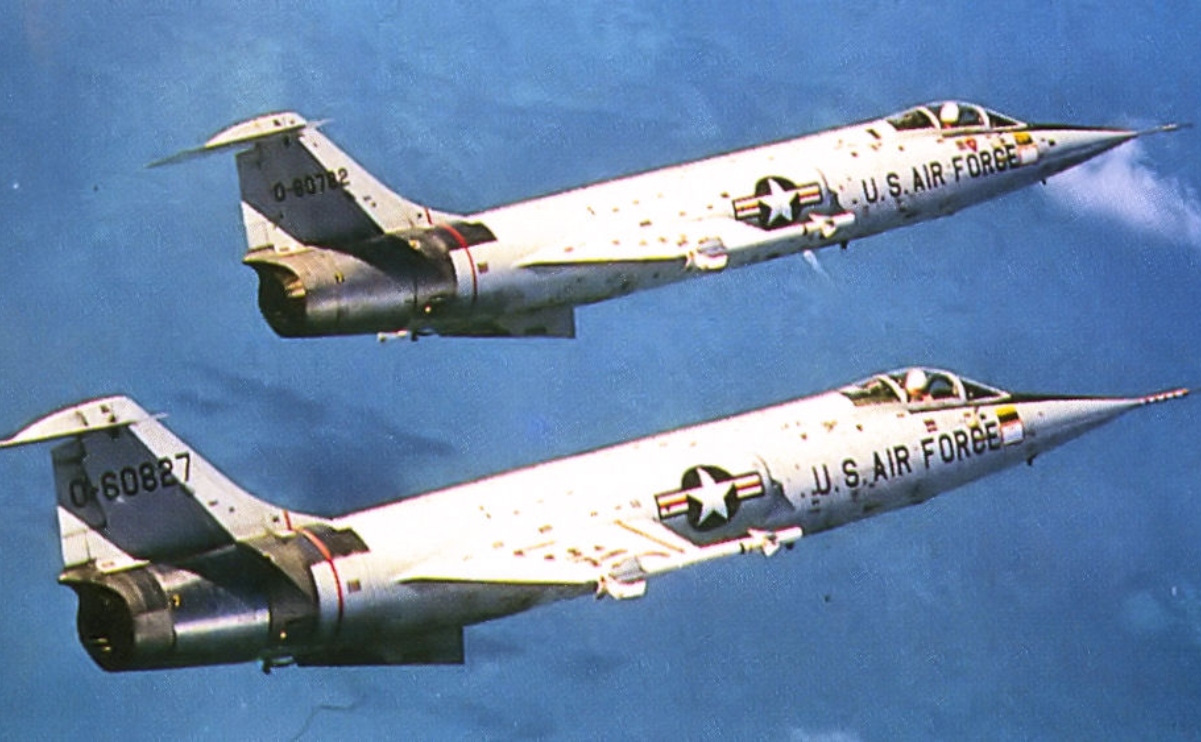
Project Featherduster: the exercise that proved the F-104 could have been a better MiG killer than the F-4C, F-105D and F-100D - The Aviation Geek Club
Project Featherduster: the exercise that proved the F-104 could have been a better MiG killer than the F-4C, F-105D and F-100Dtheaviationgeekclub.com
Bruno Anthony
I miss the Cold War
- Joined
- 5 August 2012
- Messages
- 520
- Reaction score
- 425
The South East Asia Counter Air Alternatives SEACCAL report filled with airfield attack scenarios.Ahem. Y'all are overthinking the problem. Think inside the box...
- Suggest circa 1966, Johnson and McNamara grow a pair; delegate authority, change ROE and allow aggressive BVR engagements. No VID requirement and no "knife-fighting in a phone booth".
- Or... issue a seven-day demarche to alcon; and then Linebacker the VPAF airfields and all two (both of them) rail lines coming in from China. Give the Navy a piece and mine Haiphong Harbor. What fighter problem? No new US fighters or tech needed. Don't fight the VPAF game.
- Or just declare victory and go home. Mayhaps the Great Society didn't need to pick fights with what were considered Chinese Communist proxies. Especially as the Great Leap Forward progressed.
As Mighty Joe Cool asked on Yankee Station, "Are we trying to shave a few points, or throw the game?"
Bingo.You could also argue if the Navy just put a gun in the F-4 to start with that would have solved the problem as well.
(and also the USAAF)
Plus, much easier to do that, than to start modifying the F-8 or F5D.
One of the OPs original tenets was that the USAF entered the war with a much different attitude towards air dominance than they actually did. I think that was as much a hinderance as any interservice rivalry. The Navy always seemed to understand the need for air dominance over a particular battle space. Under LeMay in the 50s the Air Forces main attention was to either nuking Reds or stopping their bombers. You could argue the last "tactical" focused aircraft the USAF bought was the F-100. I think the lack of tactical focus in their arsenal became evident when the USAF entered Vietnam and that largely drove them to adopt the F-4. If the USAF had a similar doctrine as the Navy they may have had their own tactical fighter already when the war started.A lot of options based on naval fighters like the Super Tiger are being discussed, and those all have promise I'll agree. But if you're assuming that the USAF still adopts the F-4 I think it would be quite an uphill battle to get them to be favorable to another "Navy design". Maybe if such an aircraft were made "different enough" and not share the same F-designation as the Navy ones that wouldn't be an issue.
Bruno Anthony
I miss the Cold War
- Joined
- 5 August 2012
- Messages
- 520
- Reaction score
- 425
USAF adopting the F-4 was determined by 1962. I don’t have a direct source but air superiority for tactical air forces was a nuke dropped on the enemy air base. But even b4 & after that time & with or without nukes, the preferred method for air superiority is to catch the enemy AF on the ground.One of the OPs original tenets was that the USAF entered the war with a much different attitude towards air dominance than they actually did. I think that was as much a hinderance as any interservice rivalry. The Navy always seemed to understand the need for air dominance over a particular battle space. Under LeMay in the 50s the Air Forces main attention was to either nuking Reds or stopping their bombers. You could argue the last "tactical" focused aircraft the USAF bought was the F-100. I think the lack of tactical focus in their arsenal became evident when the USAF entered Vietnam and that largely drove them to adopt the F-4. If the USAF had a similar doctrine as the Navy they may have had their own tactical fighter already when the war started.
The USN had the specialized need for Fleet Air Defense against missile carrying aircraft.
T. A. Gardner
ACCESS: Top Secret
- Joined
- 18 February 2021
- Messages
- 885
- Reaction score
- 1,519
They'd have probably come up with a supersonic F7U Cutlass...F5D was limited by wave drag. I see no reason it was superior to F-8 in the stock engine let alone if F-8 had been equipped with J79. They both shared the same radar and F-8 just needed the director equipment for Sparrow to match F5D. The F-8 was superior in agility, mobility, and raw speed; keys for survival in that age. F5D offered nothing over that save for potential to be a larger target.
I suggested the crossbreeding to create a joint design between two companies that equipped both services. The two eventually would merge.
Interesting that they used F-86H as MiG-17s. Which begs the question: any F-86H still in service by Vietnam days ?
Question answered: the ANG had a few until 1972.
Question answered: the ANG had a few until 1972.
@datafuser So better ground control, better missiles, and an internal gun were all important. Kind of applies across platforms though, which still begs the question… which platform would one want to be flying in?
A big 2-engined, 2-manned fighter like the F-4E or something else?
A big 2-engined, 2-manned fighter like the F-4E or something else?
@datafuser So better ground control, better missiles, and an internal gun were all important. Kind of applies across platforms though, which still begs the question… which platform would one want to be flying in?
A big 2-engined, 2-manned fighter like the F-4E or something else?
Most of losses were by the MiG-21's hit-and-run attacks from behind vectored by GCI.
Considering technologies available back then, the F-4 or a F-104 with all-aspect IR missiles and a look-down radar would have been the best option I guess.
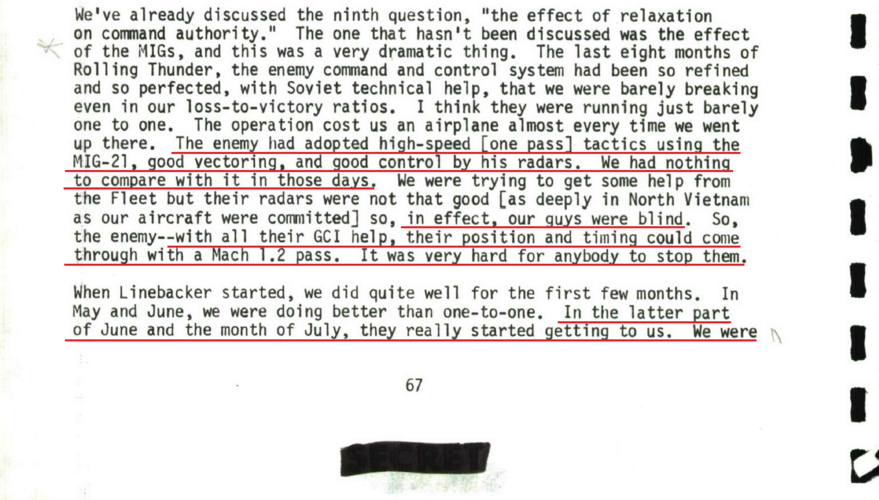
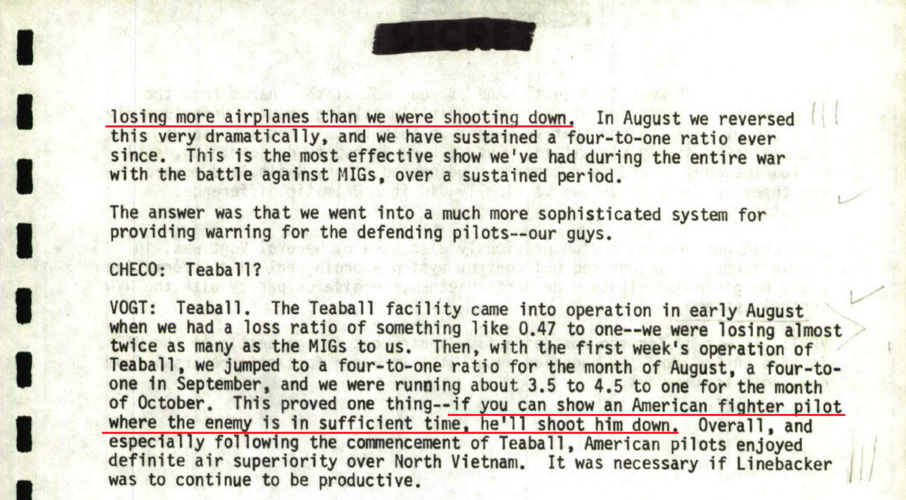
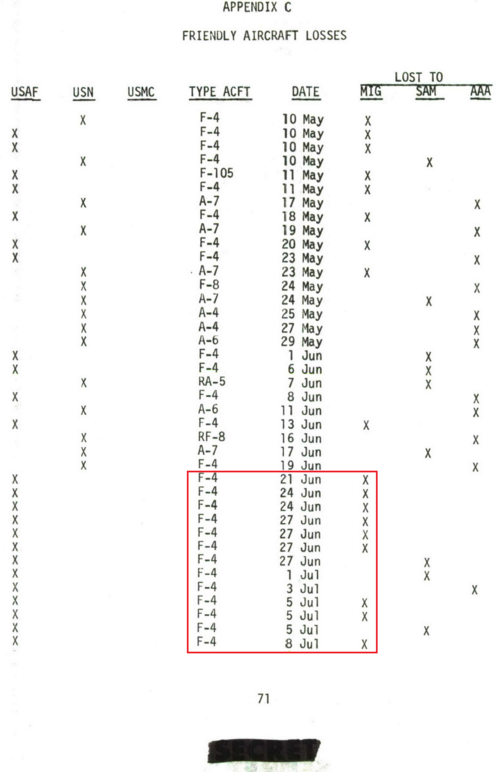
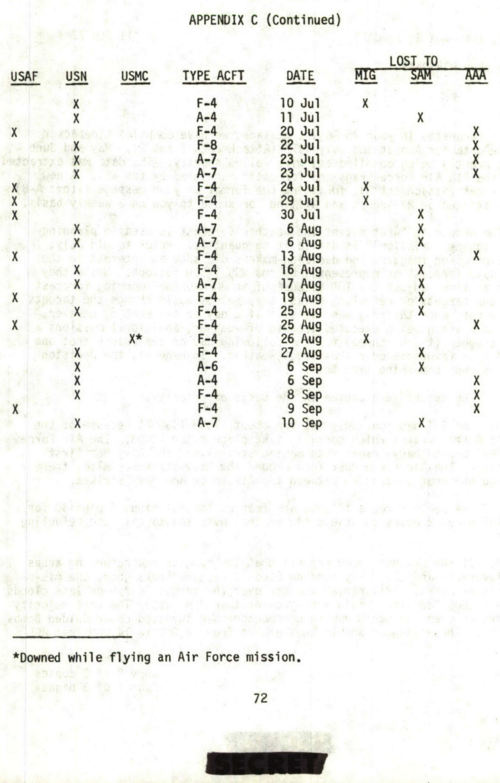

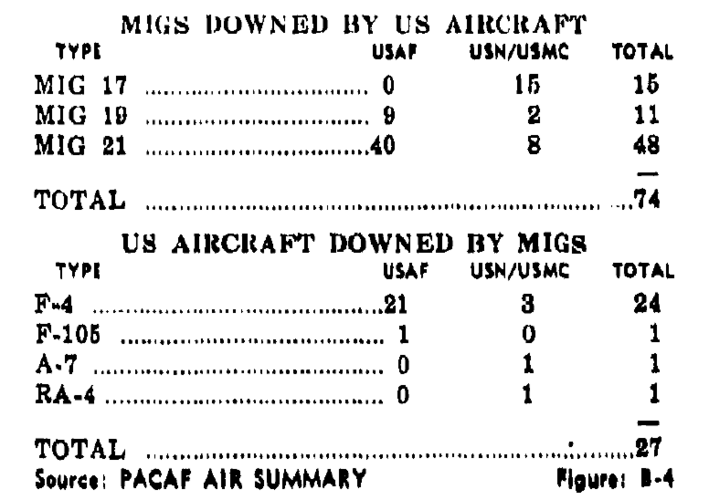
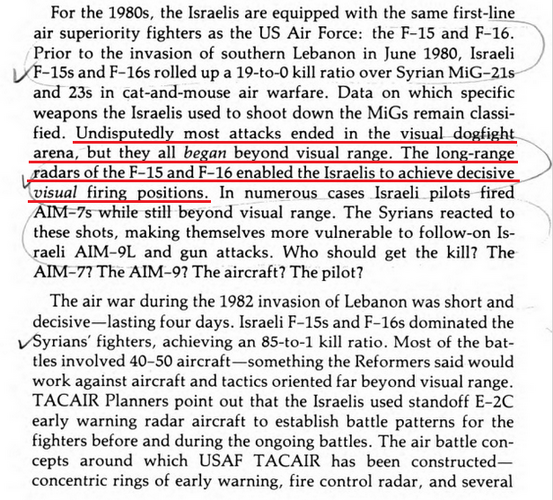
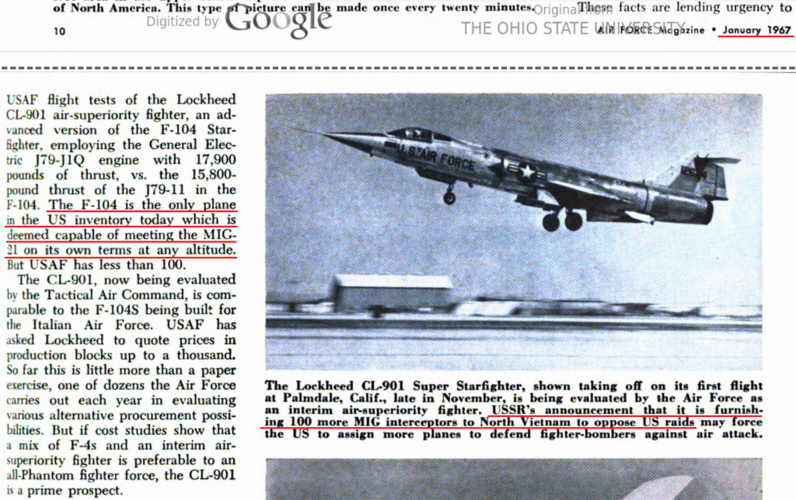
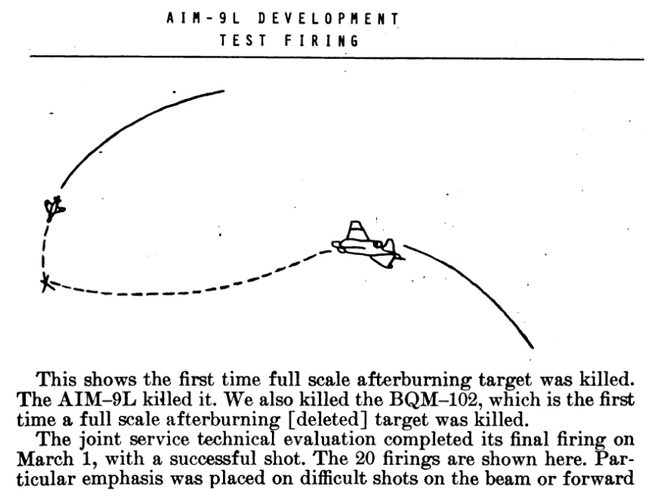
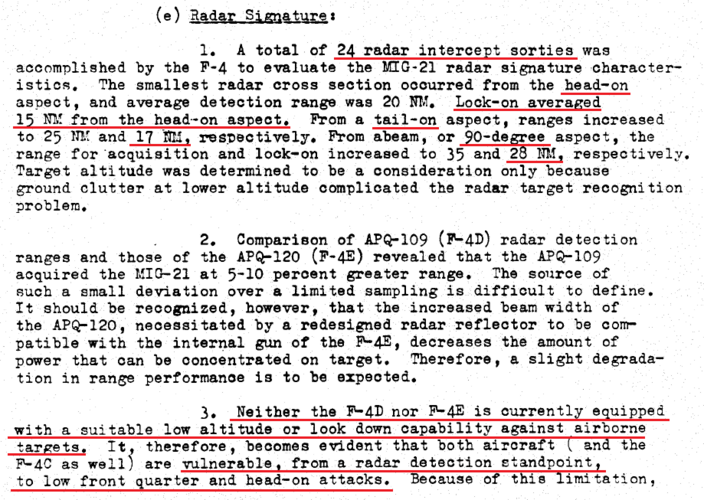
Last edited:
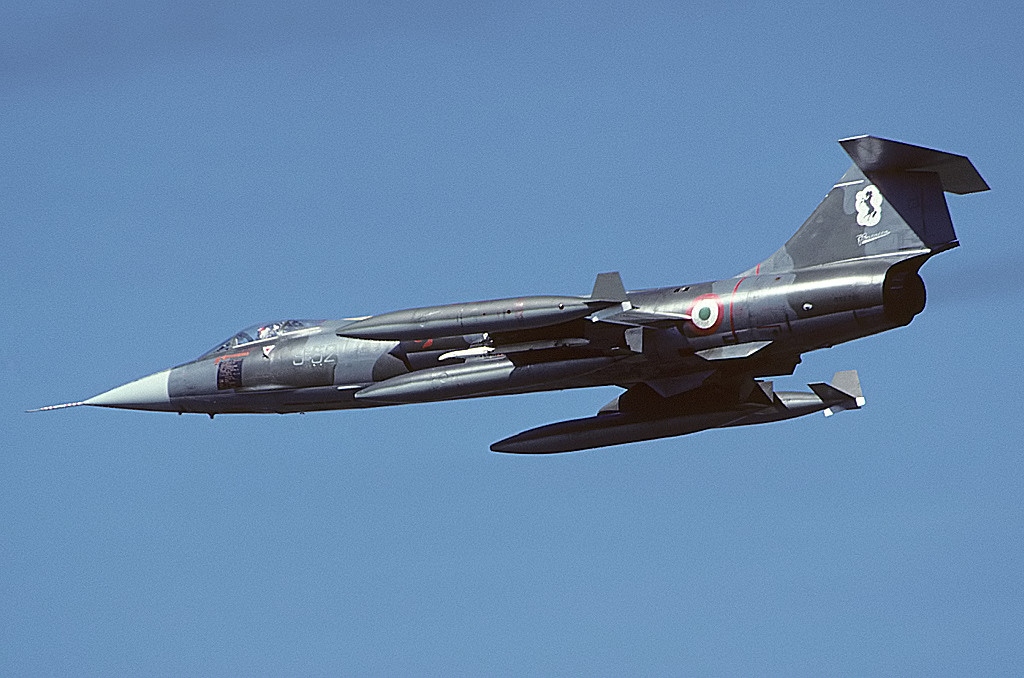
Aeritalia F-104S Starfighter - Wikipedia
The F-104 series had entered a second development phase with the F-104G (for Germany, lead country for this version). While the USAF had no more interest in the F-104, Lockheed proposed the Model CL-901 featuring the new J79-GE-19 engine and the improved Sparrow III. Further proposed developments included the CL-958 with larger wings, the CL-981 with retractable canard wings behind the cockpit, and the CL-984 optimised for low-level strike missions. An RF-104G was modified and flew in December 1966 as the prototype CL-901 "Super Starfighter".
Externally, the new type had slightly larger air intakes and steel inlet guide vanes that allowed an increase in operating temperature from 121 to 175 °C (250 to 347 °F), enabling a maximum speed of Mach 2.2. The eventual choice was the Lockheed CL-980 (a simplified version with the same wings of the projected Model CL-901).
On 26 January 1966, the AMI chose the definitive F-104S as their future fighter. The first F-104S was actually a modified Fiat-built F-104G, MM6658, that acted as an aerodynamic prototype and first flew on 22 December 1966,[2] while a second prototype, MM6660, fitted with new avionics systems closer to the final configuration, flew on 28 February 1967.[3] MM.6701, the first production F-104S built by Aeritalia flew on 30 December 1968.
Lockheed F-104 Starfighter
The F-104 Starfighter is quite possibly one of the most photographed aircraft of all time. It is certainly one of the most iconic. Here, Martin Bowman offers up a well researched, comprehensive and thoroughly entertaining history of this impressive interceptor aircraft and fighter bomber...
books.google.fr
Last edited:
Similar threads
-
-
Rolling Thunder & Linebacker Cruise Missiles campaigns against North Vietnam??
- Started by Pioneer
- Replies: 54
-
Alternate Naval Procurements in the Cold War and beyond
- Started by Keyboard Commando
- Replies: 21
-
Replacing Canberra sensibly
- Started by uk 75
- Replies: 106
-
Alt 1945 Nuclear Weapons fail
- Started by uk 75
- Replies: 13

